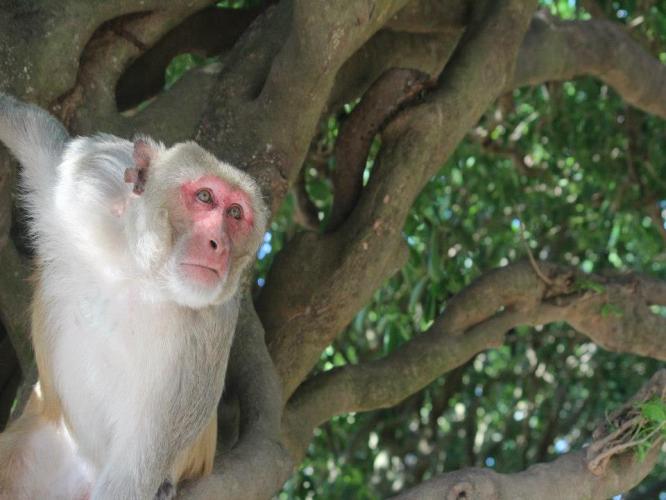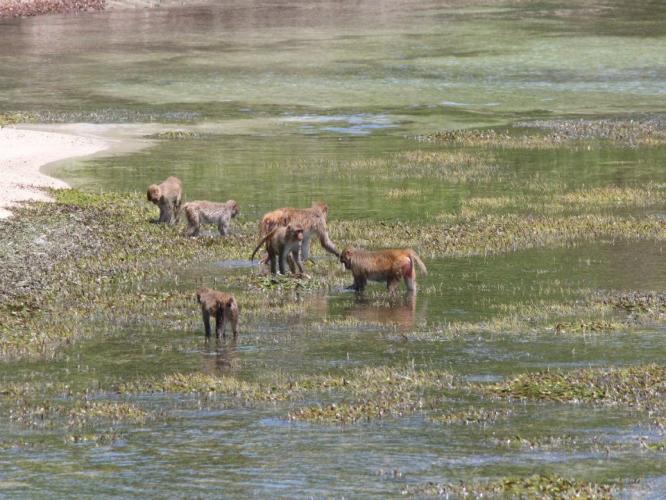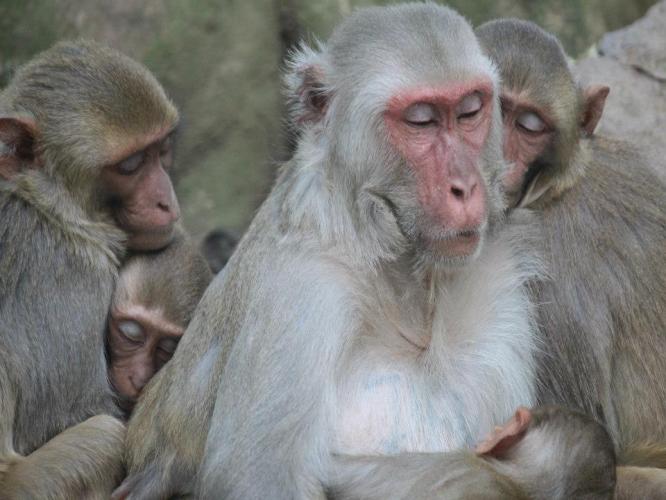There are six sub-species of rhesus macaques, or Macaca mulatta in latin. They appear on the IUCN Red List of threatened species and have been categorised as ‘Least Concern‘.
References
- Southwick CH et al. (1996). Population ecology of rhesus macaques in tropical and temperate habitats in china. In: Evolution and ecology of macaque societies (Eds. Fa JE and Lindburg DG) (pp. 95-105). Cambridge Univ Pr.
- Rawlins RG and Kessler MJ (1986). The cayo santiago macaques history, behavior, and biology, 1st edition. State University of New York Press.
- Rowe N (1996). The pictorial guide to the living primates. Pogonias Pr.
- Seth PK (2000). Habitat, resource utilization, patterns and determinants of behaviour in rhesus monkeys. Journal of Human Ecology 11(1): 1-21.
-
Seth PK et al. (2001). Indian rhesus macaque: Habitat, ecology and activity patterns of naturally occurring populations. In: Non-human primates of india , envis bulletin: Wildlife & protected areas (Ed., Gupta AK) (1 ed., Vol. 1, pp. 68-80). Wildl Inst India.
-
Fooden J (2000). Systematic review of the rhesus macaque, macaca mulatta (zimmermann, 1780) / jack fooden 1 ed. Field Museum of Natural History. https://doi.org/10.5962/bhl.title.7192
-
Seth PK and Seth S (1986). Ecology and behaviour of rhesus monkeys in india. In: Primate ecology and conservation (Eds. Else JG and Lee PC) (Vol. 2, pp. 89-104). Cambridge University Press.
-
Srivastava A and Mohnot SM (2001). Distribution, conservation status and priorities for primates in northeast india. In: Non-human primates of india , envis bulletin: Wildlife & protected areas (Ed., Gupta AK) (1 ed., Vol. 1, pp. 102-8). Wildl Inst India.
-
Southwick CH and Farooq Siddiqi M (1994). Primate commensalism : The rhesus monkey in india. Rev Ecol (Terre Vie) 49: 223-31.
-
Lindburg DG (1971). The rhesus monkey in north india : An ecological and behavioral study. In: Primate behavior: Developments in field and laboratory research (Ed., Rosenblum LA) (Vol. 2, pp. 1-106). Academic Pr.
-
Melnick DJ et al. (1984). Male migration and inbreeding avoidance in wild rhesus monkeys. American Journal of Primatology 7(3): 229-43. https://doi.org/10.1002/ajp.1350070303







